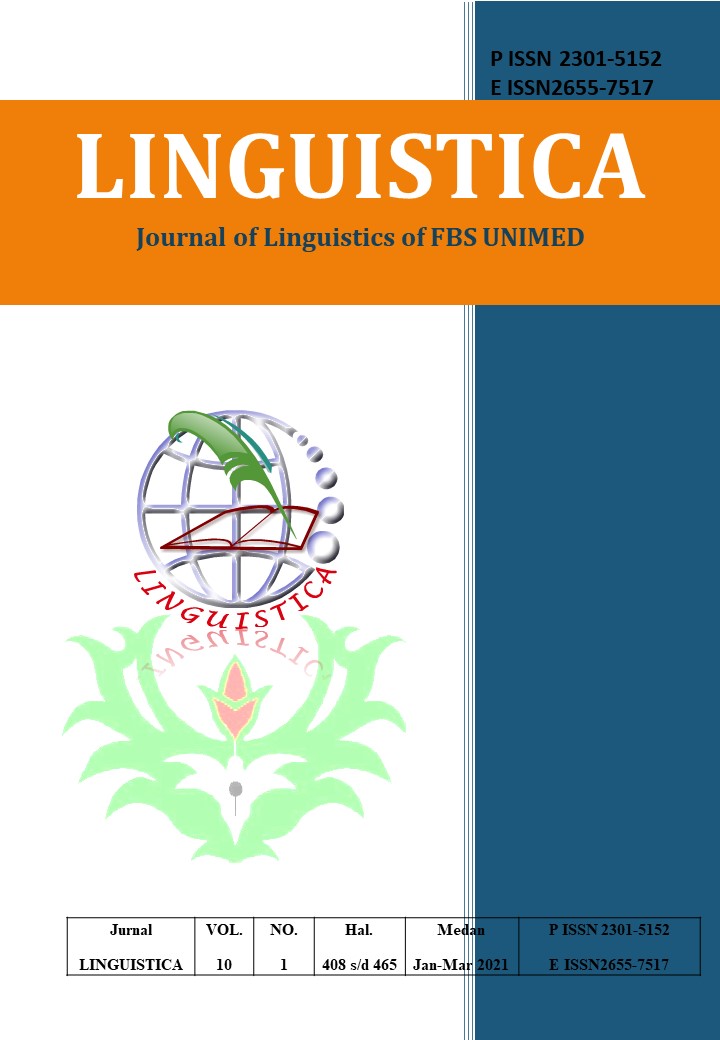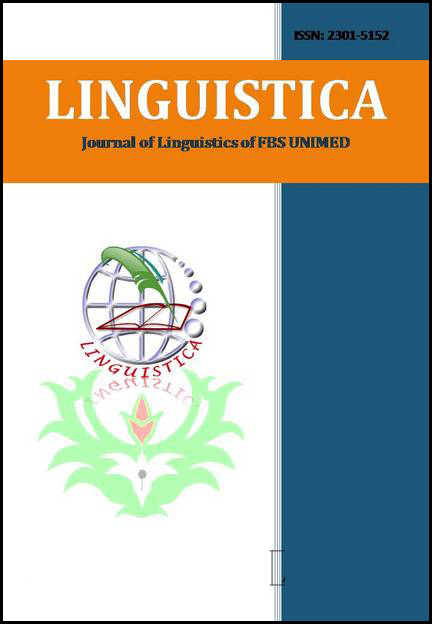METHODS IN TRANSLATING PROVERBS IN MANGALA PAKPAHAN™S BOOK: BATAK TOBA KARAKTER KEARIFAN INDONESIA
DOI:
https://doi.org/10.24114/jalu.v10i1.24254Abstract
This study aimed to find out the method used in translating Batak Toba Proverbs into English and explain the reasons for the translation method used in Mangala Pakpahan™s book: Batak Toba character kearifan Indonesia. The research was conducted by using the descriptive qualitative method. The data were taken from Mangala Pakpahan™s book that contained 72 proverbs from the Batak Toba language. The findings of the study showed that not all methods were used in translating the proverbs. They were the adaptation translation method (69.44%), followed by the communicative translation method (12.5%), free translation method (11.12%), and the last was the exact translation method (6.94%). Moreover, the reason for using the translation method in translating the proverbs was the translation sounds natural even though in the form of proverbs and is still focused on English grammatical rules. Translation method was also the easier way to be understood by the reader, and it keeps retaining the translation of the proverbs without altering the original meaning.Downloads
Published
2021-04-08
How to Cite
SIHOMBING, S., DIRGEYASA, I. W., & TETTY, M. (2021). METHODS IN TRANSLATING PROVERBS IN MANGALA PAKPAHAN™S BOOK: BATAK TOBA KARAKTER KEARIFAN INDONESIA. LINGUISTICA, 10(1), 428–438. https://doi.org/10.24114/jalu.v10i1.24254
Issue
Section
Articles
License
Copyright (c) 2021 SOLINA SIHOMBING, I WAYAN DIRGEYASA, MORADA TETTY

This work is licensed under a Creative Commons Attribution-ShareAlike 4.0 International License.
Authors who publish with this journal agree to the following terms:
- Authors retain copyright and grant the journal the right of first publication with the work simultaneously licensed under a Creative Commons Attribution License that allows others to share the work with an acknowledgment of the work's authorship and initial publication in this journal.
- Authors are able to enter into separate, additional contractual arrangements for the non-exclusive distribution of the journal's published version of the work (e.g., post it to an institutional repository or publish it in a book), with an acknowledgment of its initial publication in this journal.
- Authors are permitted and encouraged to post their work online (e.g., in institutional repositories or on their website) prior to and during the submission process, as it can lead to productive exchanges, as well as earlier and greater citation of published work (See The Effect of Open Access).
- This work is licensed under a Creative Commons Attribution-ShareAlike 4.0 International License.









